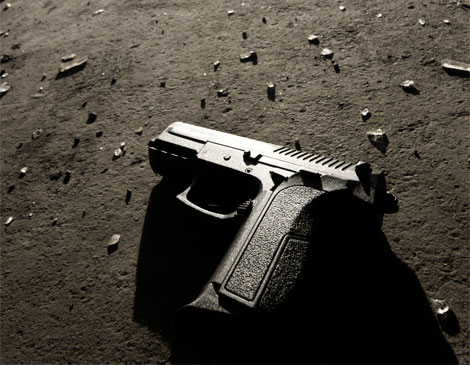I have an orange tie picked out for National Gun Violence Awareness Day June 2.
When Chicago 15-year-old Hadiya Pendleton was shot and killed in 2013, her friends wore orange as a way to remember her. A high school band majorette, Pendleton had marched for President Barack Obama’s second inaugural parade just a week before gang members killed her by mistake in a park.
Last year, on what would have been Pendleton’s 18th birthday, the
#wearingorange campaign was joined by millions, including Amnesty International, MTV News, Julianne Moore and the New York Mets. If you’re thinking, Wearing orange isn’t going to do much, you’re probably not wrong. But in many ways donning an orange shirt, scarf or tie is also a huge step — because we’re doing so very little to actually curb gun violence otherwise.
Guns killed 134 people in Cleveland last year. In about a month, 5-year-old
Ramon Burnett, 3-year-old Major Howard and 5-month-old Aavielle Wakefield all died in the city’s crossfire.
An analysis of last year’s gun-related deaths by assistant editor Sheehan Hannan showed just how dangerous it is to be a young black male in the city. Much of that gets attributed to street gangs — feuds between rivals in Union Miles and other East Side neighborhoods. We’re told there’s a proliferation of illegal weapons, cheap and available to anyone who has the want or desire. The stats back that up. In 2014, Cleveland law enforcement recovered and traced 1,679 guns — an average of 4.6 per day — through the Bureau of Alcohol, Tobacco, Firearms and Explosives National Tracing Center.
So what are we doing about it? Since the mid-1970s, medical experts — many of them in Cleveland — have been calling for this country to treat gun violence as a public health issue. And yet, the Centers for Disease Control and Prevention, with an annual budget of about $11 billion, devotes almost no money or research effort to study a problem that claims more than 30,000 lives each year. In fact, all gun research projects garner less than $5 million annually, according to an October 2015 report by the Associated Press.
The city of Cleveland seems intent on following that lead. Despite pleas from the mayor and police chief last fall that something had to be done, the city budgeted a mere $75,000 for a program to address gun violence in 2016.
It’s not enough. We must begin giving gun violence the attention it deserves, treating it like a serious public health issue. So I’ll be wearing orange, because we must do more.




